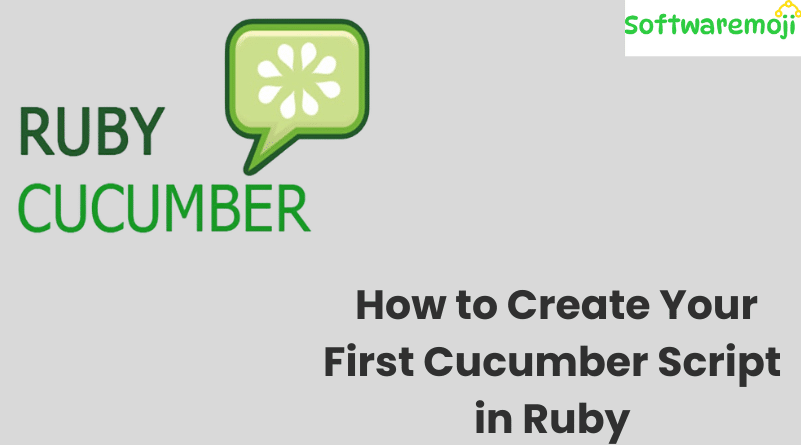
✅First Cucumber Script in Ruby :Introduction
Getting Started with Cucumber Scripts
First Cucumber Script in Ruby: Cucumber is a powerful BDD (Behavior Driven Development) testing framework that allows you to write test scenarios in plain English using Gherkin syntax. In this guide, you’ll learn how to create and run two beginner-friendly Cucumber scripts using RubyMine IDE.
Prerequisites
First Cucumber Script in Ruby: Before starting, ensure the following are installed:
- Ruby & DevKit
- Cucumber gem (gem install cucumber)
- RubyMine IDE
- watir-webdriver gem (gem install watir-webdriver)
✅ Cucumber Script 1: Multiply Two Numbers
Objective:
First Cucumber Script in Ruby: Write a feature to multiply two numbers and verify the result using Cucumber.
Step-by-Step Instructions:
Step 1: Open RubyMine
Launch RubyMine from the Windows Start menu.
Step 2: Create a New Project
- Go to File > New Project
- Choose the directory where the project will be stored and click Create
Step 3: Create Project Structure
- Inside your project, create a new folder called features
- Under features, create a new file named multiply.feature
Step 4: Write Feature File
gherkin
Feature: Multiply two numbers
Scenario: Multiply 5 and 10
Given I have two numbers 5 and 10
When I multiply them
Then the result should be 50
Step 5: Run the Feature File
Open “Start Command Prompt with Ruby” and run:
bash
cucumber features/multiply.feature
You’ll see an error because the step definitions are not yet created.
✅ Step Definition for Multiplication
Step 6: Create Step Definition File
- Cucumber Script in Ruby: Create a folder inside features named step_definitions
- Create a Ruby file multiply_steps.rb
Step 7: Add Code in multiply_steps.rb
ruby
Given(/^I have two numbers (\d+) and (\d+)$/) do |num1, num2|
@result = num1.to_i * num2.to_i
end
When(/^I multiply them$/) do
# Multiplication done in Given step
end
Then(/^the result should be (\d+)$/) do |expected_result|
expect(@result).to eq(expected_result.to_i)
end
Step 8: Run the Test Again
bash
cucumber features/multiply.feature
✅ You should now see the test pass successfully.
✅ Cucumber Script 2: Email Input Validation
Objective:
First Cucumber Script in Ruby: Test the behavior of a form when the email field is empty or filled.
✅Feature File: email_validation.feature
gherkin
Feature: Email form validation
Scenario: Submit form without email
Given I open the browser
And I navigate to “http://demo.guru99.com/”
When I click the submit button without entering an email
Then I should see an error message
Scenario: Submit form with email
Given I open the browser
And I navigate to “http://demo.guru99.com/”
When I enter “test@example.com” in the email field
And I click the submit button
Then I should be redirected or see a success message
✅Step Definition File: email_steps.rb
ruby
require ‘watir’
require ‘rspec’
browser = Watir::Browser.new :chrome
Given(/^I open the browser$/) do
@browser = Watir::Browser.new :chrome
end
And(/^I navigate to “(.*)”$/) do |url|
@browser.goto url
end
When(/^I click the submit button without entering an email$/) do
@browser.button(name: ‘submit’).click
end
Then(/^I should see an error message$/) do
expect(@browser.text).to include(“Email ID is required”) # Adjust message as needed
end
When(/^I enter “(.*)” in the email field$/) do |email|
@browser.text_field(name: ’emailid’).set(email)
end
And(/^I click the submit button$/) do
@browser.button(name: ‘btnLogin’).click
end
Then(/^I should be redirected or see a success message$/) do
expect(@browser.url).to include(“access.php”) # Adjust depending on app behavior
end
✅Run the Email Feature File
bash
cucumber features/email_validation.feature
✅First Cucumber Script in Ruby: The tests will run in the browser and validate the presence or absence of email input.
✅Summary
| Cucumber Script | Description |
| Multiply Numbers | Multiplies two integers and validates result |
| Email Validation | Tests form behavior with and without email input |
